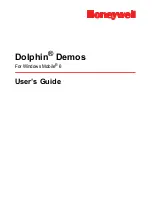
Assigning Trunk/line data
251
Programming Operations Guide
Answer
mode
Manual
Auto
Define whether a trunk is manual or automatic answer.
Auto answer mode allows the trunk to be a shared resource by the system
telephones.
For auto answer trunks being used to allow remote call-in from system users, the
trunk can be configured to answer with a straight dial tone, if DISA has not been
enabled. It can also be configured to answer with a stuttered dial tone if DISA is
enabled and the caller is expected to enter a COS password. The COS password
defines which system features the caller is permitted to access.
Manual answer trunks are assigned to one or more telephones. The assigned
telephones exclusively own the line.
Note:
You require Disconnect supervision on the line if loop start trunks are to
operate in auto-answer mode (Trunk mode).
Answer with
DISA
Y or N
If Y, when a remote user calls into the system on an unsupervised line, the system
prompts a caller for a six-digit class of service (COS) password.
If N, when a remote user calls into the system on an unsupervised line, the call is
connected as dialed.
Link at CO
Y or N
Some exchanges respond to a Link signal (
FEATURE 71
) by providing an
alternative line for making outgoing calls.
Enabling Link at CO causes the system to apply the restrictions on outgoing calls to
the digits dialed after the Link signal. As well, the call on the alternative line is
subject to all restrictions.
Disabling Link at CO prevents a Link signal from resetting the Business
Communications Manager restrictions in cases where the host exchange does not
provide an alternative line.
You also need to ensure that telephones using the line have the feature allowed.
Refer to
“Defining telephone dialing restrictions” on page 453
.
Use auxiliary
ringer
Y or N
Turn the auxiliary ringer on or off for all telephones using this line.
When programmed on a line, the auxiliary ringer will ring every time a call is
received.
Note:
When programmed only on a telephone, no ring occurs for a transferred call.
An auxiliary ringer can also be programmed in Services to ring for a line placed into
a scheduled Ringing service. Refer to
“Configuring ringing service” on page 496
Full autohold Y or N
Enables or disables Full autohold.
When enabled, if a caller selects an idle line but does not dial any digits, that line is
automatically placed on hold if you then select another line.
The default setting should be changed only if Full autohold is required for a specific
application.
Loss
Packages
Short CO
Medium CO
Long CO
Short PBX
Long PBX
Select the appropriate loss/gain and impedance settings for each line.
For more information refer to
“Using loss packages” on page 272
.
Impedance
600 ohm
900 ohm
The GATM can be set to a specific impedance level. This is determined by local
line requirements.
Table 32
Loop start analog and digital fields (Continued)
Attribute
Value
Description
Summary of Contents for BCM 3.7
Page 4: ...4 Software licensing N0008589 3 3...
Page 32: ...32 Contents N0008589 3 3 W 937 Index 939...
Page 46: ...46 Tables N0008589 3 3...
Page 64: ...64 How to get help N0008589 3 3...
Page 90: ...90 Manually activating Telnet N0008589 3 3...
Page 116: ...116 Delayed system restart N0008589 3 3...
Page 194: ...194 Configuring a data module N0008589 3 3...
Page 276: ...276 Setting line telco features N0008589 3 3...
Page 310: ...310 Using COS passwords N0008589 3 3...
Page 364: ...364 Enhanced 911 E911 configuration N0008589 3 3...
Page 380: ...380 Renumbering DNs N0008589 3 3...
Page 398: ...398 Saving wizard pages on your computer N0008589 3 3...
Page 458: ...458 Voice Mail settings N0008589 3 3...
Page 488: ...488 Setting system telco features N0008589 3 3...
Page 508: ...508 Other programming that affects public networking N0008589 3 3...
Page 522: ...522 PRI networking using Call by Call services N0008589 3 3...
Page 592: ...592 Monitoring Hunt groups N0008589 3 3...
Page 636: ...636 Configuring Double Density N0008589 3 3...
Page 640: ...640 Using the Network Update Wizard N0008589 3 3...
Page 666: ...666 Importing and Exporting DHCP data N0008589 3 3...
Page 722: ...722 Restarting the router N0008589 3 3...
Page 726: ...726 Important Web Cache considerations N0008589 3 3...
Page 748: ...748 Configuring an Interface with NAT N0008589 3 3...
Page 794: ...794 IPSec N0008589 3 3...
Page 818: ...818 Configuring the Policy Agent characteristics N0008589 3 3...
Page 832: ...832 Firewall rules for Business Communications Manager with Dialup interfaces N0008589 3 3...
Page 876: ...876 ISDN Programming N0008589 3 3...
Page 1004: ...1004 Index N0008589 3 3...
















































